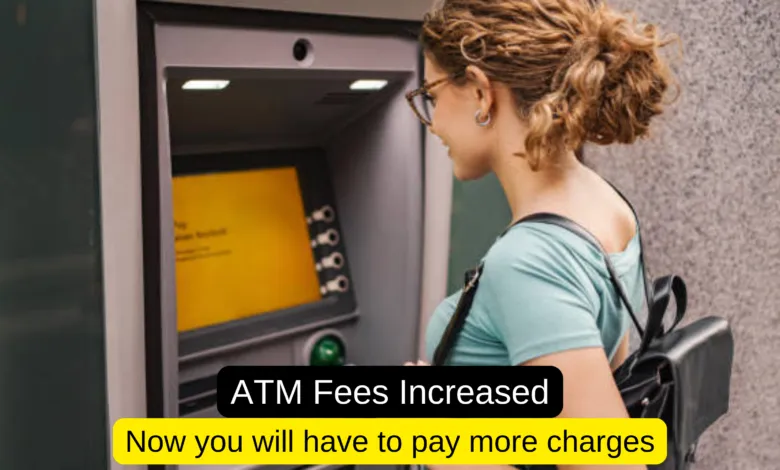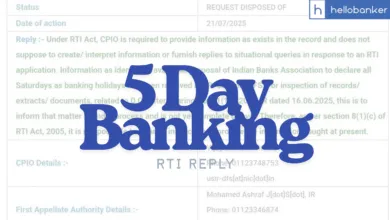Bank ATM Fees Increased, You will have to pay more fees for Cash Withdrawal

| ➡️ Get instant news updates on Whatsapp. Click here to join our Whatsapp Group. |
The Reserve Bank of India (RBI) has increased ATM Fees. Now you will have to pay more charges for withdrawing cash from ATM. But this charge will not be applicable to all ATMs. You will have to pay more charges if you withdraw cash from ATM of other Banks. This means that if you have a bank account in State Bank of India (SBI), but you withdraw cash from ATM of any other bank such as Punjab National Bank (PNB), Bank of Baroda (BOB), Canara Bank, Union Bank of India, HDFC Bank, ICICI Bank or any other bank in India, then you need to pay more charges.
Let’s know how much fees has been increased – The RBI has approved an increase in ATM interchange fees, raising the charge for financial transactions by ₹2 and non-financial transactions by ₹1. This change will take effect from May 1, 2025, and is expected to impact smaller banks with a limited ATM network more significantly.
What is an ATM Interchange Fee?
An ATM interchange fee is the amount a bank pays to another bank when its customers use an ATM that does not belong to their own bank. This fee helps maintain ATM infrastructure and operations. Customers often bear these costs indirectly as banks include them in service charges.
How Much ATM Fee has been Increased?
- Financial transactions (such as cash withdrawals): ₹19 per transaction (up from ₹17).
- Non-financial transactions (such as balance inquiries): ₹7 per transaction (up from ₹6).
This is the first revision in ATM interchange fees since June 2021.
Will Banks Pass the Increased Fee to Customers?
Banks have not officially decided whether they will pass the increased fee to customers, but history suggests they will.
A senior banking official stated, “Whenever interchange fees were revised in the past 10 years, banks always passed the increase to customers. This time will be no different.”
This means that customers may soon have to pay higher ATM withdrawal and inquiry charges, especially when using ATMs of other banks after exceeding their free transaction limit.
Why Was the Fee Increased?
The decision to raise interchange fees was based on requests from white-label ATM operators (private companies that run ATMs but are not banks). These operators were struggling financially under the current fee structure.
The National Payments Corporation of India (NPCI) communicated the fee increase to banks on March 13, 2025, after seeking approval from the RBI.
Impact on Smaller Banks
Smaller banks with fewer ATMs could face higher expenses, as they will have to pay more to other banks when their customers use ATMs outside their network.
A senior official from a mid-sized private bank said, “For smaller banks, this is a tough situation. If they pass the extra cost to customers, they might lose them. If they absorb the fee, it will hurt their profitability.”
Current Free ATM Transaction Limits
- Metro areas: Customers get 5 free transactions per month at ATMs of other banks.
- Non-metro areas: Customers get 3 free transactions per month at ATMs of other banks.
After these limits, banks charge customers additional fees for ATM transactions, which may now increase due to the hike in interchange fees.
